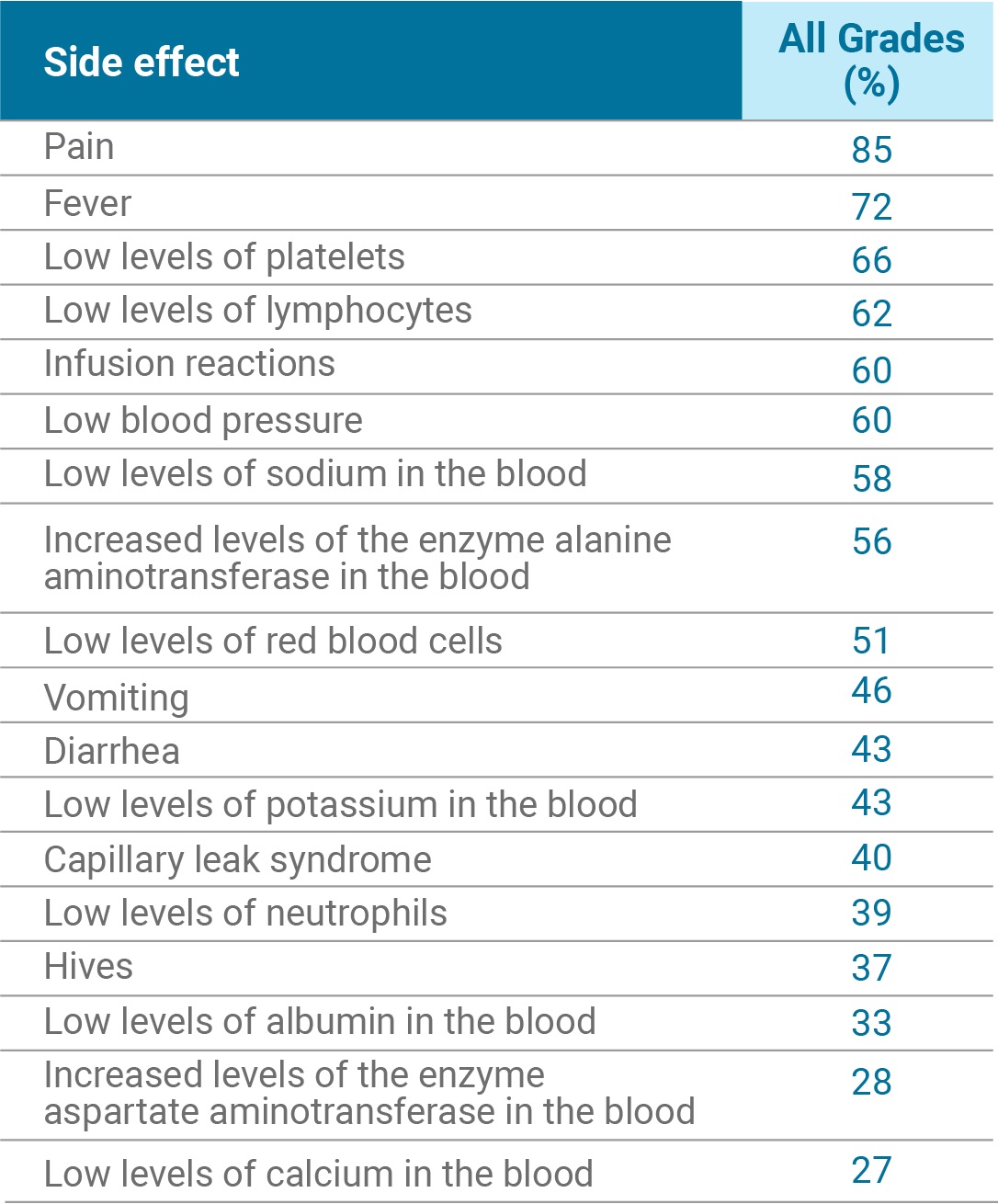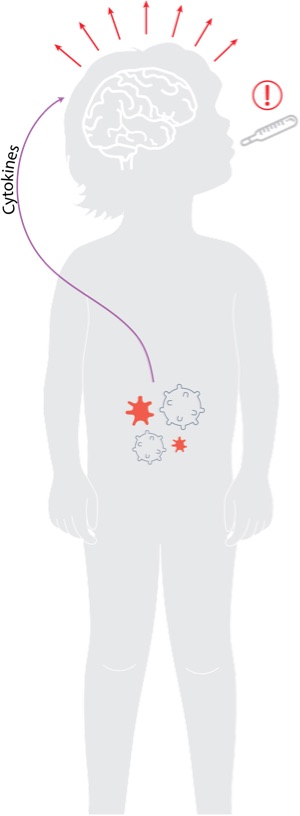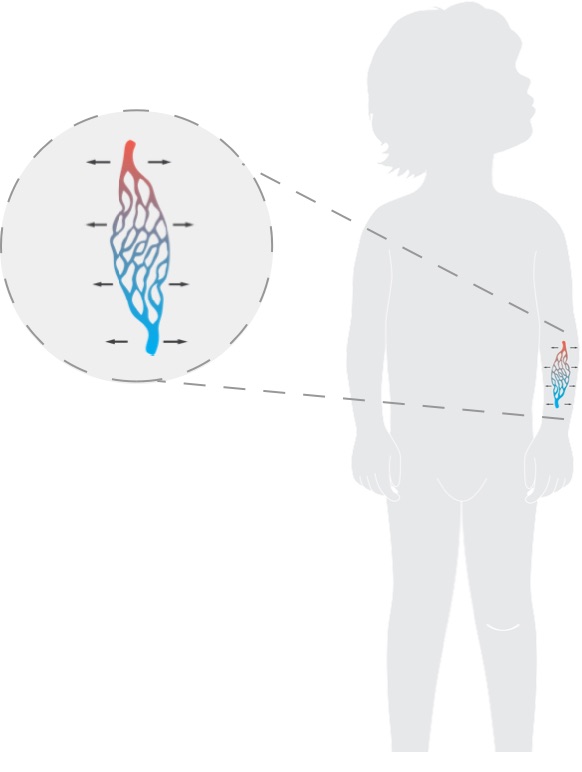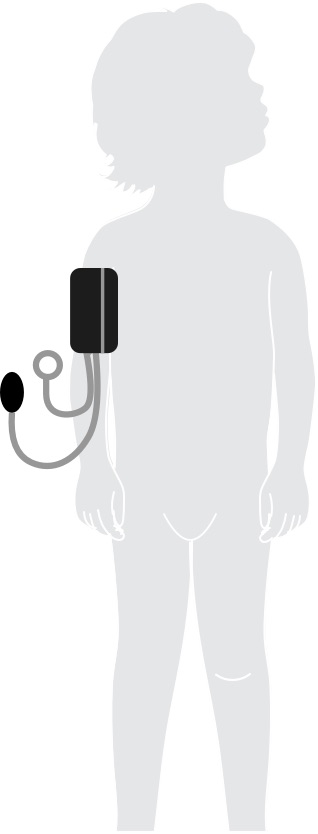What to Expect
Safety and side-effect profile
Doctors and pediatric cancer professionals at children’s hospitals across the country have extensive experience with Unituxin. This makes it possible for you to find an experienced care team in your geographic area.
The safety of Unituxin has been studied longer than any other antibody therapy in children with high-risk neuroblastoma. Here you can find out what to expect during antibody therapy with Unituxin.
How is Unituxin given?
- Unituxin is given as an intravenous (IV) infusion over 10 to 20 hours
- Given daily for 4 days in a row
- Premedications are given before the Unituxin antibody infusion because there are many expected side effects with Unituxin antibody therapy
- Your healthcare team will use various medications to help prevent some of these side effects
- Premedications may include:
- Intravenous fluids
- Medications for allergic reaction, such as Benadryl®
- Medications for fever, such as Tylenol®
- Strong medications for pain, such as morphine
- Additional medications may be used as decided by your child’s healthcare team
- Some side effects can be related to the rate of the Unituxin infusion
- Your healthcare provider will know how and when to adjust the infusion rate or discontinue Unituxin
- Unituxin treatment is given in the hospital by a dedicated healthcare team
- Your child is monitored 24/7 while in the hospital to ensure the infusion is safe and tolerable
Understanding the side effects
Many side effects with the Unituxin antibody infusion can be expected, and they may be managed proactively by your child’s healthcare team. Some of the side effects experienced during treatment with Unituxin only occur during the infusion and will stop once the infusion is complete.
An expected side-effect profile
The side-effect profile for the antibody therapy regimen is based on the patients with high-risk neuroblastoma who enrolled in the ANBL0032 study and received Unituxin as part of their treatment. The rates of side effects seen in clinical trials for one therapy should not be directly compared to rates in the clinical trials of another therapy and may not reflect rates seen in clinical practice.
Most common side effects from the ANBL0032 study
The following is a list of the most common side effects seen in 10% or more of patients taking the antibody therapy regimen.

Managing certain side effects
Here you can learn about specific side effects, why they happen, how they are managed, and what you can do as a caregiver to help.
Select a side effect to learn more.

Infusion reactions
Infusion reactions are an exaggerated response by the immune system to a foreign substance. Reactions can range from mild to severe. Symptoms may include rashes, hives, cough, wheezing, facial swelling, or anaphylaxis.
In the clinical trial, infusion reactions were more common when Unituxin was given with IL-2.
To help prevent reactions, your child will be given medicine (such as Benadryl®) before and during the Unituxin infusion.
You can help by monitoring your child for a rash, coughing, swelling in the lips or face, or trouble breathing.
Fever
Fever is a sign that the immune system has been activated and is one of the ways the body defends itself. The body uses cytokines and other proteins to communicate this message to the brain.
Symptoms of fever may include the skin feeling warm or hot to the touch, sweating, or shivering.
To help prevent fever, your child will be given medicine (such as Tylenol®) prior to and during the Unituxin infusion.
You can help by telling the healthcare team if your child appears to have any of the symptoms of fever.


Capillary leak syndrome
When the immune system is activated and there are high levels of cytokines present, small blood vessels (capillaries) may dilate and leak fluid into surrounding tissues.
In the clinical trial, capillary leak syndrome was more common when Unituxin was given with IL-2.
To help prevent capillary leak syndrome, your child’s vital signs, weight, fluid intake, and urine will be monitored closely.
You can help by telling the healthcare team how much your child drinks and how much urine they produce, and if you notice your child has any swelling, is not urinating, or if they feel lightheaded, dizzy, or weak.
Low blood pressure
Also known as hypotension, low blood pressure happens when the pressure within the blood vessels is lower than normal.
Low blood pressure can be a direct side effect of the Unituxin infusion. It can also be a late sign of capillary leak syndrome.
To help prevent low blood pressure, your child will be given intravenous fluids prior to the start of Unituxin infusion.
You can help by telling the healthcare team if your child is dizzy, lightheaded, or nauseous. They may recommend slowing down the infusion rate.


Neurological disorders of the eye
Neurological disorders of the eye are rare when a child is receiving Unituxin, but visual changes can occur. In some patients, these visual changes did not resolve. Symptoms may include blurry vision, double vision, sensitivity to light, dilated pupils, unequal pupils, or drooping of the eyelid.
Your child’s eyes will be monitored closely during the Unituxin infusion for neurological disorders of the eye.
You can help by telling the healthcare team right away if your child has any change in vision or has vision loss.
